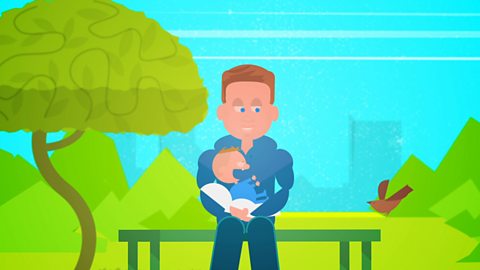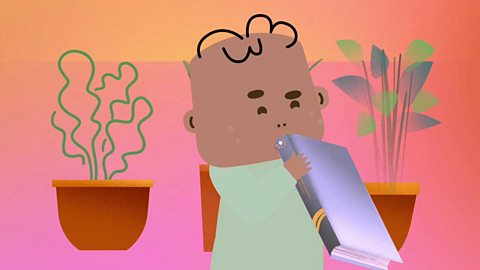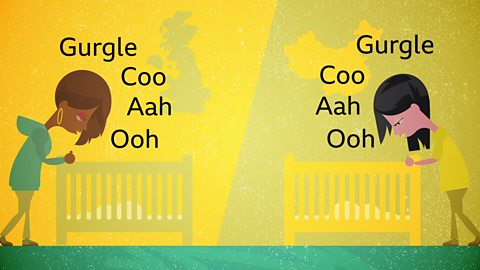Picture the scene: youãre tired, youãre hungry, you order a morning coffee ãand a nana pleaseã. Oops!
You might feel embarrassed when baby talk creeps into regular adult conversation, but it can happen, especially if you spend a lot of time talking to children. And did you know some features of baby talk make up a lot of our everyday speech?
Child or Infant-Directed Speech, known more commonly as ãbaby talkã, has been proven to improve language-learning in little ones by helping them tune into adults' speech. But even childfree grown-ups are using it all the time without thinking too much about it.
Hereãs three common characteristics of speech that we borrow from baby talk and how they benefit little onesã language development.
Diminutives
A diminutive is a word which is changed to convey ãsmallnessã or endearment. An example of this would be adding a ãyã sound to the end of words like ãdogã to make ãdoggyã.
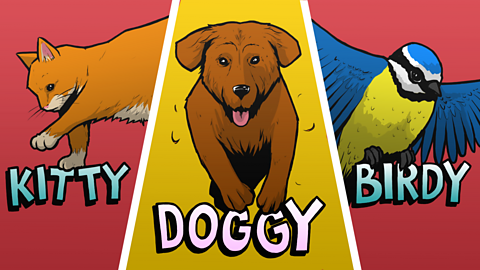
This feature occurs in many languages: for example, in Spanish, changing the end to ã-ito/-itaã changes words to a diminutive version, and it's often used for affectionate terms - so your 'abuela' (grandmother) might also be your 'abuelita'. Similarly, in German you can add the ending '-chen' to make something small, e.g. 'liebchen' (little love) is a common term of endearment.
We often use diminutives without thinking when we speak to children, referring to a ãbirdyã instead of a ãbirdã or a ããkittyã instead of a ãcatã. You might worry that using these instead of the proper words will hinder learning. However, research shows that the opposite is true: sounds added to a root word actually help babies to pick these out as individual words within sentences. found that children between 4 and 21 months who heard more diminutives from their caregivers were quicker to build vocabulary than those who heard fewer.
In English, itãs common to add a ã-yã sound to words (kitty, birdy, etc.), but there are words we use in common speech where even the root has come from baby talk. For example ãtummyã uses a similar sound to ãstomachã which is easier for little mouths to say (ãtomach ã ãtumã or ãtum-tumã). The word ãtummyã has been in use since the mid-19th Century, with a written record of a ãtummy-acheã in 1874, and eventually us adults came to adopt it when talking to each other as an informal way of talking about our stomachs.
Onomatopoeia
Onomatopoeias are words which sound like the thing theyãre referring to. Weãre taught these when weãre young and never stop using them. Think about it, youãre likely to have been taught at a very young age that cow goes 'moo', dog says 'woof', etc.
Onomatopoeias are thought to be helpful for language learning as itãs easier to understand and remember a word that ãmatchesã what it describes in its sound. Itãs also thought that because adults will change their tone of voice and pitch when using them, it makes them more engaging for little ones. So, onomatopoeic words support speech development as they involve sensory learning.
You probably use onomatopoeias without even noticing, for example you might not add your onions to the pan until it sizzles or politely remind someone that time is ticking.
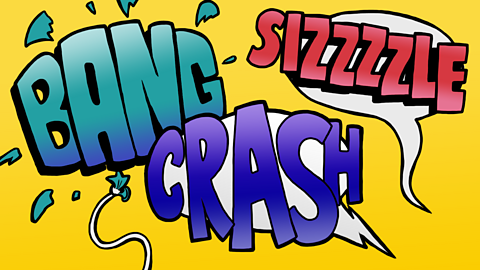
Reduplication
Reduplication is the repetition of whole words, partial sounds or similar sounds to form a new word, and is frequently found in baby talk. You can even hear it in baby babble around the six-month mark, with repeated sounds like 'bababa', 'gagaga' etc.
Using the earlier example of ãstomachã, ãtum-tumã takes a more digestible partial sound and repeats it. Repetition is good for childrenãs learning in lots of ways. Researchers in the Edinburgh study found that babies are more likely to come to understand words with repeated sounds as they stand out when spoken by adults around them. They are also more likely to be memorable than their more ãadultã forms. So babies are more likely to remember the sound of ãnight-nightã than ãgoodnightã for example, making it easier for them to pick up on its meaning.
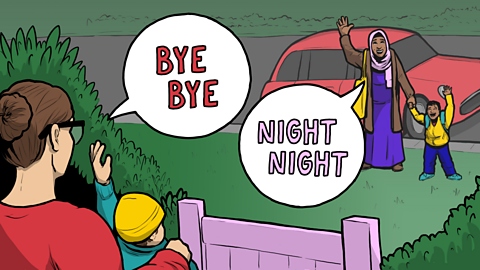
Do we grow out of using baby talk? Not quite. Baby talk characteristics do tend to decrease in little ones as their vocabularies expand, but some still remain. The next time you wish someone 'night-night' or find something 'easy-peasy' as an adult, think about how you're throwing way back to your childhood!

In case you missed it
Is baby talk good for babies? video
This short animation gives parents a clear explanation of why baby talk helps babies to concentrate on what they're saying.
